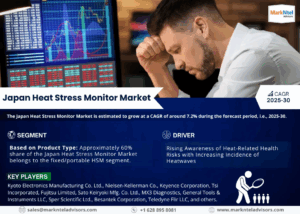Performance-driven ads marketing is the answer. Unlike traditional advertising, which focuses on impressions and reach, performance marketing emphasizes measurable results such as conversions, sales, and ROI. In this guide, we’ll explore the key strategies, tools, and best practices for mastering performance-driven ads marketing.
What is Performance-Driven Advertising?
Performance-driven advertising is a marketing strategy that prioritizes results over reach. Advertisers only pay when a specific action-such as a click, lead, or sale-is completed. This method ensures that every dollar spent contributes to measurable business growth.
Key Components of Performance-Driven Ads:
- Goal-Oriented Campaigns – Every ad campaign is optimized toward specific objectives like lead generation, sales, or app downloads.
- Data-Driven Decisions – Marketers rely on analytics and insights to refine ad performance.
- Optimized Budget Allocation – Funds are allocated based on ad performance, ensuring higher efficiency.
- A/B Testing – Different versions of ads are tested to identify the best-performing elements.
- Retargeting and Personalization – Ads are tailored to users based on their behaviors and interests.
Benefits of Performance Marketing
- Higher ROI – Since advertisers pay only for measurable results, there is a better return on investment.
- Precise Targeting – Advanced targeting options ensure ads reach the right audience.
- Scalability – Campaigns can be easily adjusted based on performance.
- Lower Risk – Advertisers minimize wasted ad spend by focusing on conversion-driven strategies.
Top Platforms for Performance-Driven Ads
- Google Ads – Offers search, display, video, and shopping ads with strong intent-based targeting.
- Facebook & Instagram Ads – Ideal for audience targeting based on demographics, interests, and behaviors.
- LinkedIn Ads – Best for B2B lead generation and professional networking.
- TikTok & Snapchat Ads – Effective for engaging younger audiences through creative video formats.
- Amazon Ads – Great for eCommerce businesses looking to increase product sales.
Key Strategies for Success
- Define Clear Objectives
Before launching a campaign, identify key performance indicators (KPIs) such as click-through rates (CTR), cost per acquisition (CPA), and return on ad spend (ROAS).
- Leverage AI and Automation
Platforms like Google Ads and Facebook Ads offer AI-powered bidding strategies that optimize ads for maximum performance.
- Create High-Converting Ad Copy and Creatives
- Use compelling headlines and clear calls-to-action (CTAs).
- Incorporate high-quality visuals and engaging videos.
- Highlight unique selling points (USPs) to differentiate your offering.
- Implement Retargeting Campaigns
Retarget users who have interacted with your brand but haven’t converted yet. Use dynamic ads to show personalized offers.
- Analyze and Optimize
Monitor campaign performance using analytics tools and continuously optimize ads based on key metrics.
Measuring Success in Performance Marketing
To ensure your campaigns are successful, track the following key metrics:
- CTR (Click-Through Rate) – Measures how often users click on your ads.
- Conversion Rate – The percentage of users who complete a desired action.
- CPA (Cost Per Acquisition) – The cost incurred to acquire a customer.
- ROAS (Return on Ad Spend) – The revenue generated per dollar spent on ads.
- Customer Lifetime Value (CLV) – The total revenue a business can expect from a customer.
Conclusion
Performance driven ads marketing is an essential strategy for businesses looking to achieve measurable growth. By leveraging data, targeting the right audience, and continuously optimizing campaigns, brands can maximize their advertising investments. Whether you’re a small business or a large enterprise, implementing a performance marketing strategy will help you achieve your goals efficiently and effectively.
Read more blogs on TheGuestBlogs





